Today, I would like to introduce you guys to a friend and fellow photographer of mine. She’s one of those crazy creative souls that has actually figured out how to blend sci-fi, science and photography into an abstract art form! When I stumbled across her 2 years ago, she was a painter but after a couple years of hard work, passion and experimentation she’s come out with a body of work I have never quite seen before. I think you’ll enjoy it (and be sure to scroll to the bottom!). Presenting to you: Anick Morel

It all began two years ago when I came across an article about a burning light bulb that reignited my creativity.
I’ve always liked photography but never had the time to explore that medium seriously until recently.
My first experiments with burning light bulbs were quite rough. At first, I would miss the critical moment when the “explosion” was as its best. But after dozen of attempts, I started to get the hang of things. The light bulb burns for about 3 seconds so you have plenty of time to get the perfect shot.
I love science. I love physic and chemistry phenomena. I love light bulbs. The beauty, intricacy and delicacy of the smoke coming from the burning tungsten wire is what attracts me most. I love the fact that light bulbs are easily obtained and that you can do a lot with them (photography speaking) So far, I haven’t run out of experiments I can do with a burning light bulb: you can photograph them with the glass partially broken or with no glass at all, can put different chemicals on it (like fireworks powders), turn the bulb upside down, put glass above it, etc.

All my images are shot in camera. Since the smoke is white, I use Lightroom to bring colours to the image. And then use Photoshop to erase imperfections and bring out the details. Sometimes, like with chemicals, you won’t need to add colours in post production. These days, I treat my images so they have a painterly feel to them. It adds a new dimension.

From there, I started scouring the web for new and exciting things to photograph. One of the things I stumbled upon was cream. Cream is like liquid smoke. I enjoy the cream technique because just like the light bulb, it creates beautiful ethereal shapes going from translucent to opaque.
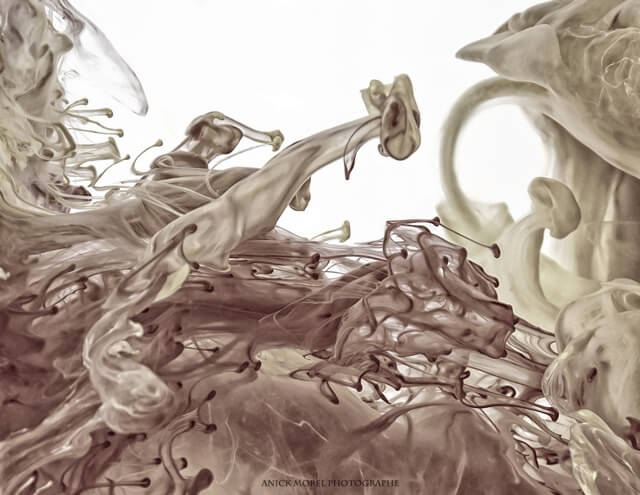
When you pour it into water, it just slowly descent and makes little medusa shapes. Very inspiring. What’s more, you can colour cream with food colouring and/or choose the density of the cream (10%, 15% or 35%).
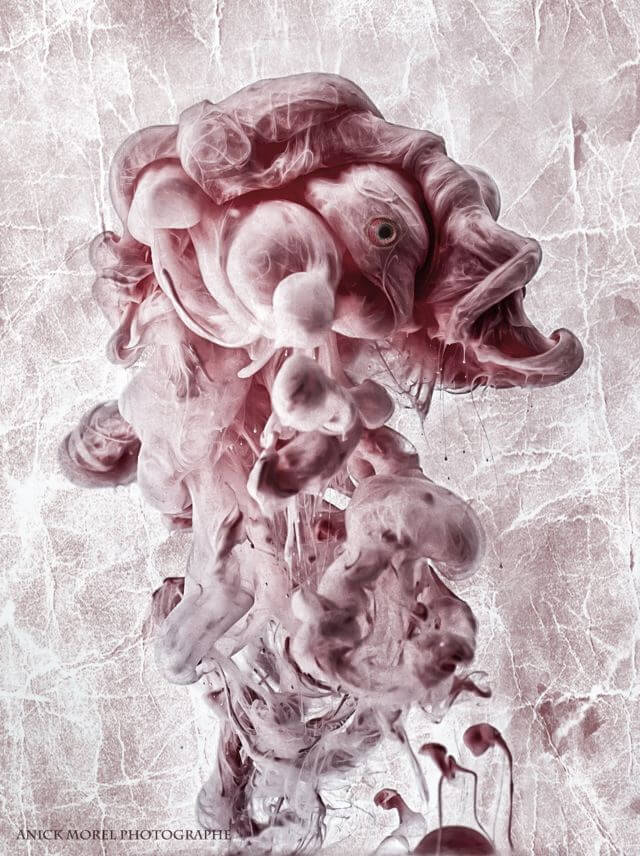
Timing is not a factor when you photograph cream but the container is. You need a flat surface (like an aquarium) if you don’t want your image to be distorted and be out of focus. Oddly enough, the biggest challenge is the speed of pouring the cream into the water. Much like the light bulb, you need to practice a little to get it right. But when you master the pouring, the rest comes easy.

One more effect I’ve discovered along the way is the magic of the soap bubble. I really love this technique even if it gives limited results. Photographing bubbles can be a little tricky; Their lifespan is not very long, the wall of the bubble is always in motion and you need a good light source placed at a strategic place to see the the colours.
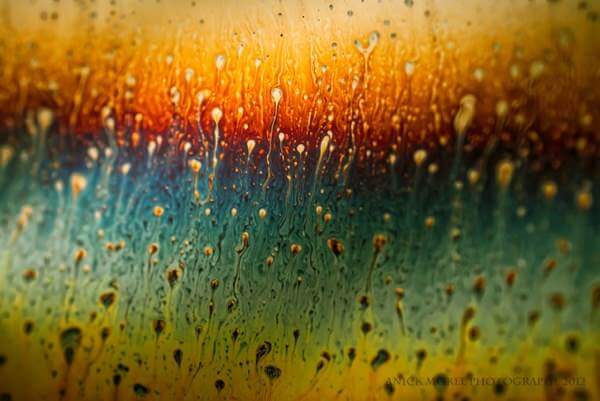
What fascinates me is the colours that dance on the surface of the bubble. It comes from the light being reflected from both the inner and outer surface of the wall of the soap bubble. Soap molecules have one end that repels water, and another that attracts it, and these molecules move to the inner and outer surfaces, thrusting their water-repelling ends out into the air, and their “heads” inwards.
A good macro lens is a must since the area of the bubble you want to capture is very small. And if your camera has a lot of MP, you will be able to blow up the image without loosing definition. If you want to extend the life span of your bubble, add some glycerin.
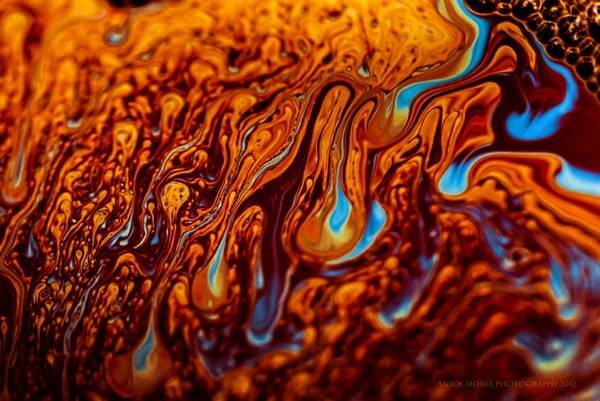
As you might have noticed, all my abstracts involved a little bit of science. It’s because, and I’ll proudly admit it, I’m a geek. I’m into RPGs and LARPing. I Love fantasy, science-fiction and horror novels. I was an avid comic book reader in my teen years. And because I am a geek, I started a brand new series involving super heroes logos.
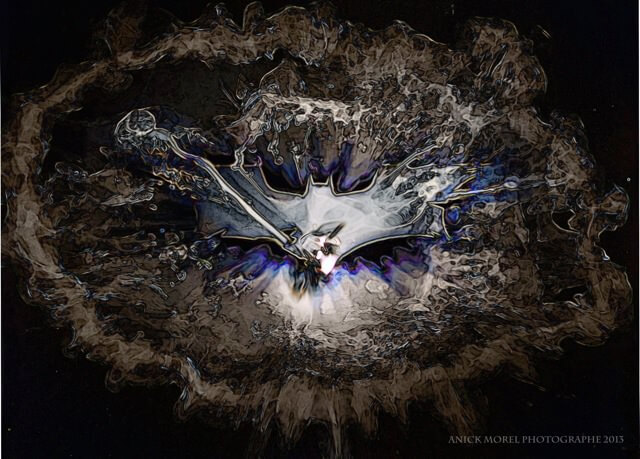
This series combines my love for comic books, science-fiction and abstract. I admit it, I got jealous of all those talented photographers that could create all the wonderful images with heroes and villains, knights and goblins and felt like I had to contribute to the geek world…And so I have in my own way. This series is called: Heroes, Legends and Icons. It’s a small tribute, but I’m only beginning. Heroes of this world take heed, I’m coming after you. Or your logos anyway 🙂
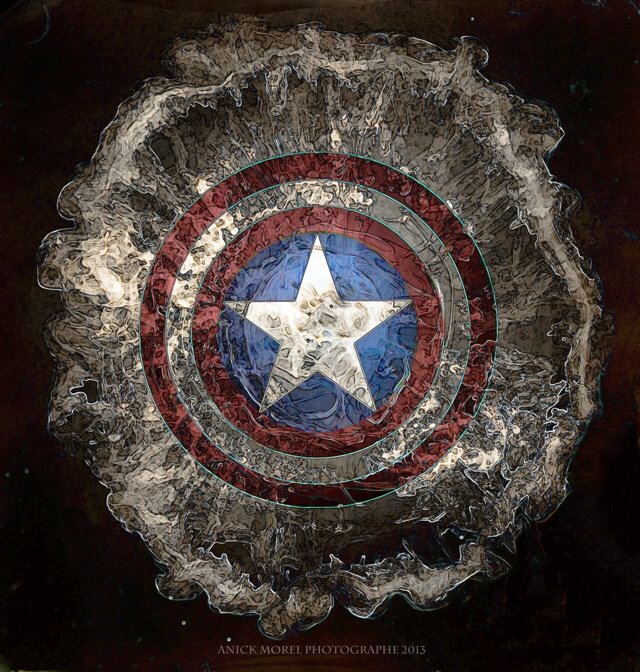
Like my previous abstracts, all is done in camera. But unlike the rest, this series is much more figurative. You can clearly see the logo in there. How it’s done is very simple: I take a light bulb with the glass removed and place over it a sheet of glass on top of which I place the logo that has been printed on transparent film. I then shoot from the top.
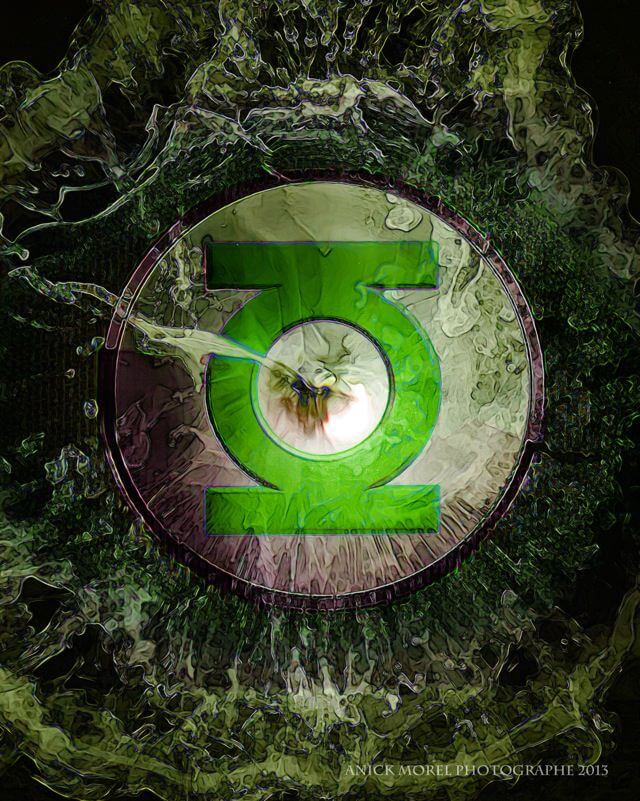
Post-production is the same process as my other light bulb images. LightRoom and Photoshop. Because of the of the film over the glass, I don’t need to add much colouring to the image.

I will leave you on this little note: If you have a passion or even something you like to do, don’t be afraid to invest a little time (or a lot), energy and a little money into that thing. You don’t know where it can lead you. Or what amazing things you can discover and achieve.
–
If you like her work, be sure to check out her fan page !
